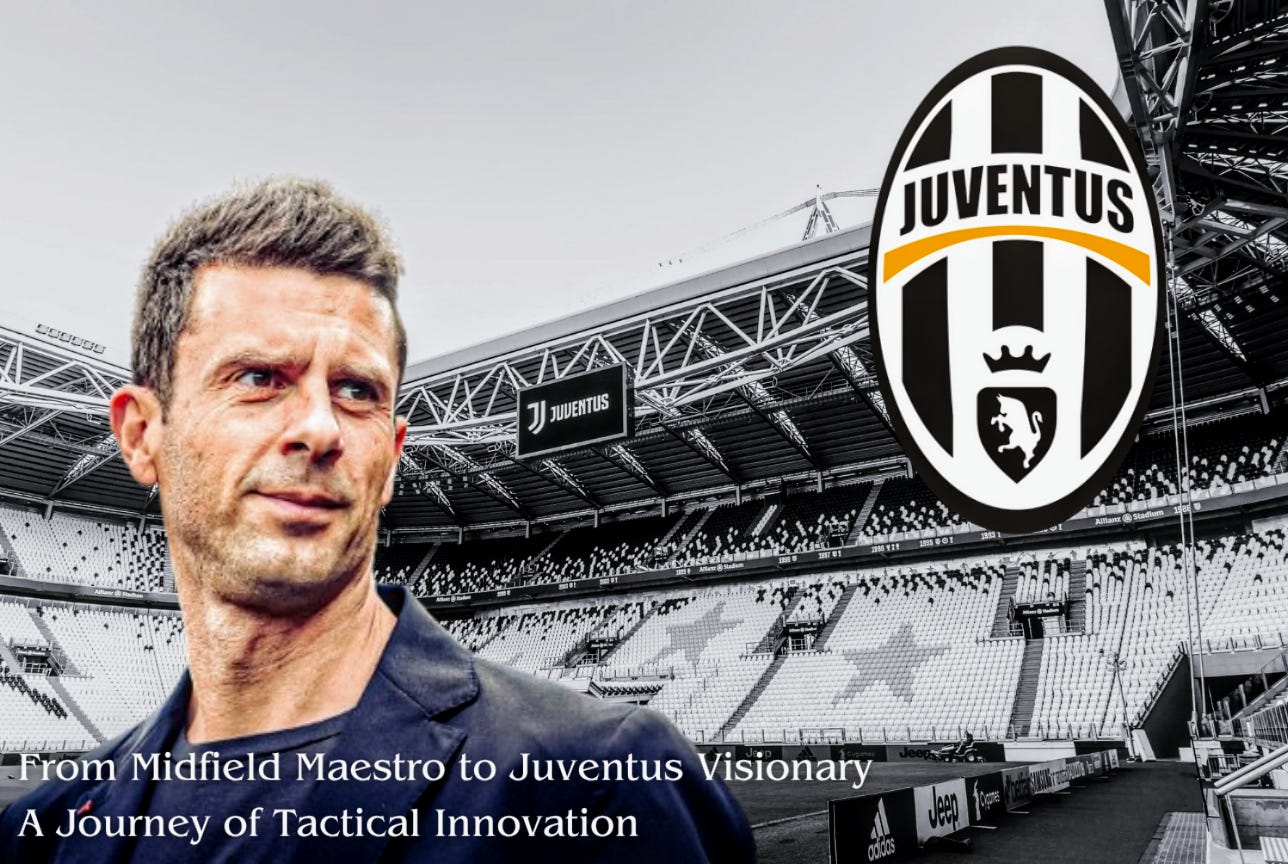Thiago Motta: From Midfield Maestro to Juventus Visionary – A Journey of Tactical Innovation
The Value of the Ball
Thiago Motta’s unique footballing journey—born in Brazil, raised in Catalonia, and embraced by Italy—has deeply influenced his tactical philosophy. A product of Barcelona’s La Masia academy, Motta was molded by a culture of precision and possession. His playing career, spanning over two decades, saw him learn under managerial greats such as Carlo Ancelotti, Laurent Blanc, and Gian Piero Gasperini. These experiences, combined with his cerebral playing style as a metronomic midfielder, laid the foundation for his current success as a coach.
In his managerial career, Thiago Motta has continued to make waves, now stepping into a crucial role at Juventus following his transformative spell at Bologna FC. At Bologna, he turned the team into one of Serie A’s most tactically astute sides, guiding them to a top-half finish in the 2023/24 season—their best league position since 2011/12. Building on his success at Bologna, Motta has brought his innovative philosophy to Juventus, aiming to reestablish the club as a dominant force in Italian football. His distinctive approach, centered on fluidity, central overloads, and intelligent positional play, remains a cornerstone of his tactical identity as he takes on the challenge of competing at the highest level with Juventus.
The Core Philosophy: The Value of the Ball
Motta’s coaching thesis, titled "The Value of the Ball", underscores his belief in the centrality of possession. He describes his relationship with the ball as beginning in childhood and evolving through his time at Barcelona, where the importance of managing the ball—individually and collectively—was deeply ingrained.
While in Italy, Motta expanded his tactical repertoire, learning to integrate spatial occupation into his strategies. Under Gian Piero Gasperini at Genoa, he embraced the art of verticality, focusing on structured passing channels to transition quickly from defense to attack. His time at PSG under Ancelotti and Blanc refined his understanding of centrality and positional play.
Tactical Components of Thiago Motta’s System
Central Overloads
One of Motta’s key tactical principles is the emphasis on packing central areas. This approach has dual benefits:
In Possession: Ensures multiple passing options around the ball carrier, enabling quick interchanges to bypass opposition pressure.
Out of Possession: Facilitates immediate counter-pressing, allowing the team to win back possession quickly.
Wide channels are left largely to the full-backs, who provide width while the central players dominate the core of the pitch. This strategy reflects Motta’s prioritisation of central superiority in both attacking and defensive phases.
The "2-7-2" Formation
Motta’s unconventional "2-7-2" formation, first mentioned in an interview with Gazzetta dello Sport in 2018, highlights his innovative approach. He counts the goalkeeper as part of the seven central players, emphasizing their integral role in build-up play. According to Motta:
“The goalkeeper is the first attacker, and the striker is the first defender.”
By involving the goalkeeper in possession, Motta’s teams create numerical superiority in the first phase of play. This forces the opposition to either press high, leaving gaps elsewhere, or remain compact, allowing unpressured distribution.
Non-Traditional Forward Play
Motta prefers a versatile forward who can drop deep, link play, and exploit spaces between the lines. At Bologna, Marko Arnautović excelled, whilst at Juventus Motta has deployed Dusan Vlahovic in this role, both players have the ability to:
Play killer passes and link midfield with attack.
Hold up the ball under pressure.
Make intelligent runs into wide or central spaces.
This fluid forward role disrupts defensive structures and opens opportunities for teammates in advanced positions.
Implementation and Tactical Recreation in Football Manager
Build-Up Play
Motta’s build-up phase often begins with the goalkeeper. Center-backs split wide, while full-backs push high to stretch the pitch. A half-back drops deep to provide a central outlet, forming multiple passing diamonds around the ball carrier. This structure aids progression through tight spaces and encourages positional fluidity.
Midfield Dynamics
Motta’s midfield is a balanced mix of dynamism, creativity, and physicality. Key roles include:
Carrilero: Plays riskier vertical passes to progress play.
Box-to-Box Midfielder: Provides late runs into the box, exploiting gaps in the opposition’s defensive line.
Half-Back: Acts as the metronome, maintaining possession with patient and sensible passing.
Wide Play
While centrality remains the focus, Motta tasks his wide players to exploit spaces out wide. Instructions like "Stay Wider" for defenders and "Cross Less Often" for inverted wingers ensure possession is retained while stretching the opposition.
Team Fluidity
Motta’s philosophy revolves around positional interchange and shared responsibilities. In Football Manager terms, this equates to a "Fluid" team structure, where players contribute collectively to both attacking and defensive phases.
Final Thoughts
Thiago Motta’s tactical approach is a masterclass in blending individual brilliance with collective cohesion. His emphasis on centrality, positional fluidity, and intelligent player roles propelled Bologna to new heights. While his philosophy draws from the greats he played under, Motta’s innovations—such as the "2-7-2" formation—set him apart as a forward-thinking coach.
Whilst Juventus continue to thrive under his stewardship (unbeaten at time of writing with 18 games played in Serie A), Motta’s methods offer valuable insights for football tacticians and enthusiasts alike. Whether on the pitch or in Football Manager simulations, his principles showcase the beauty of a well-executed, possession-based system.





